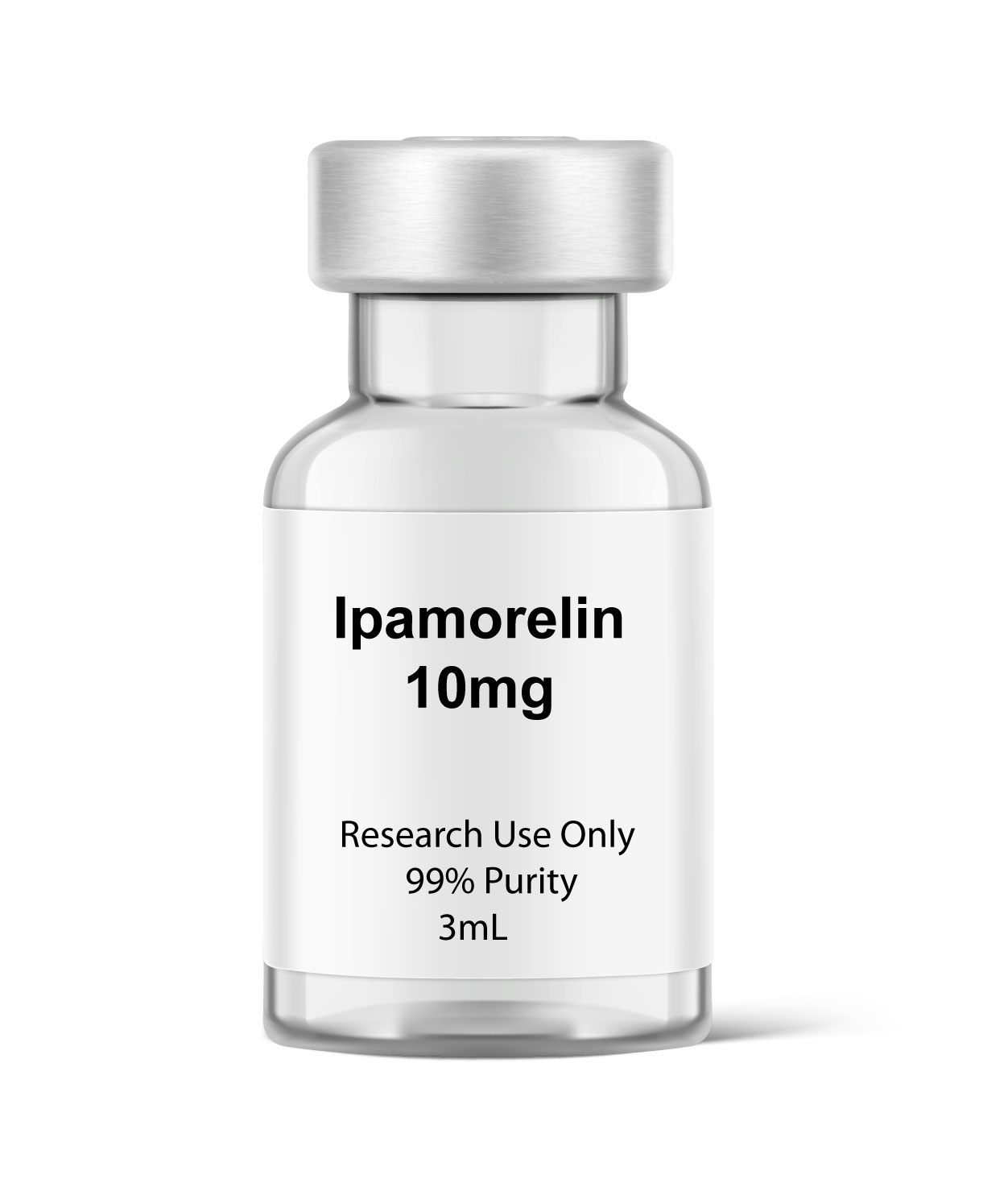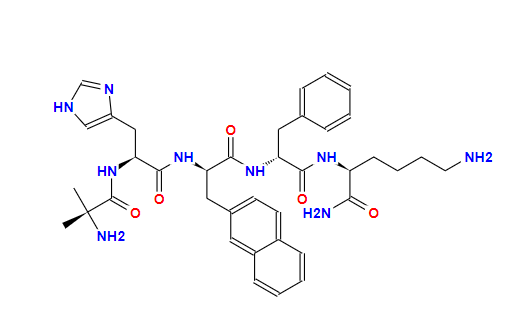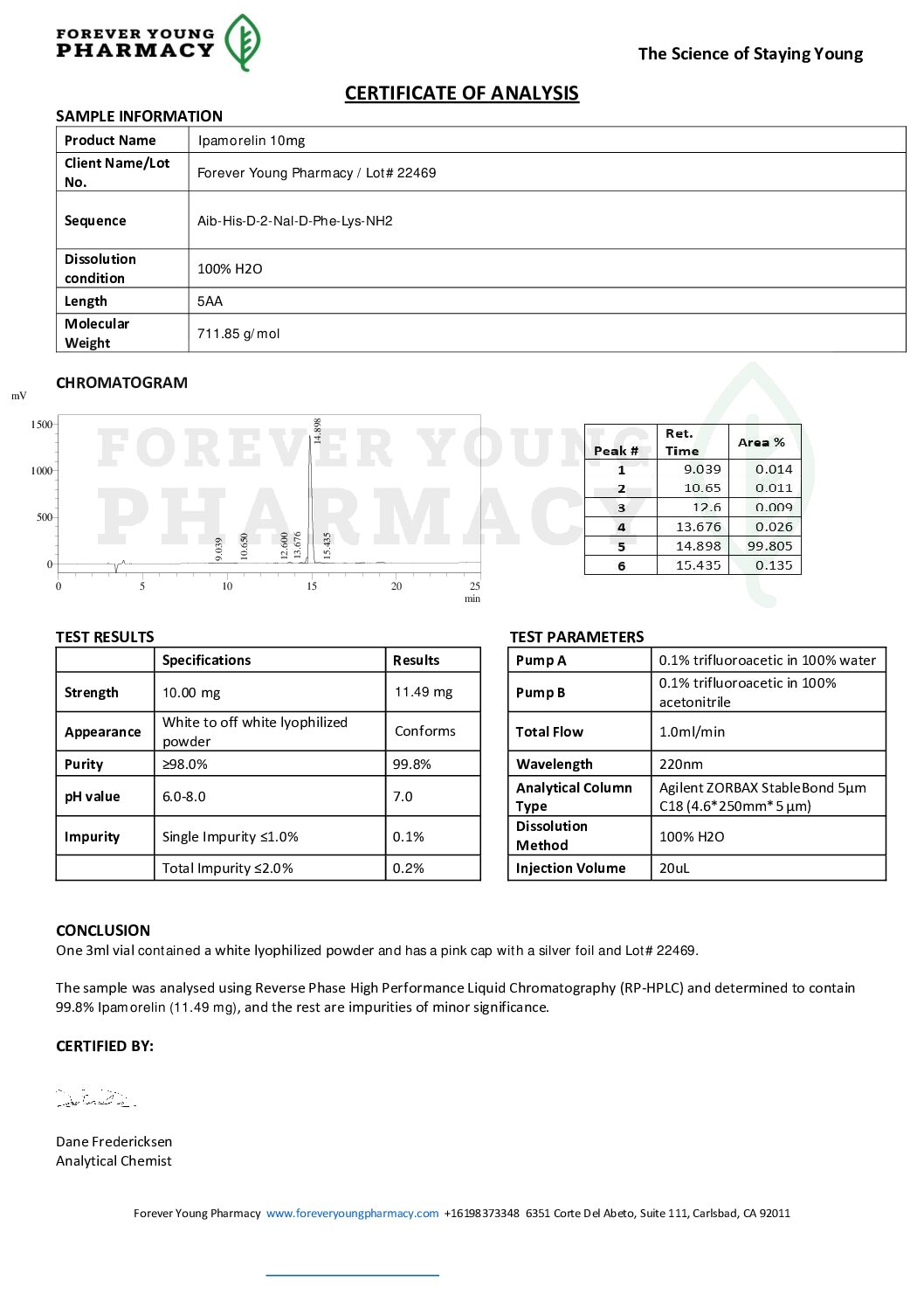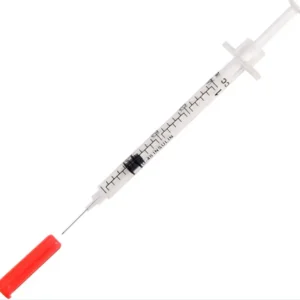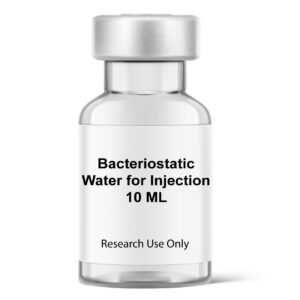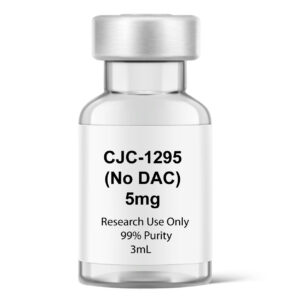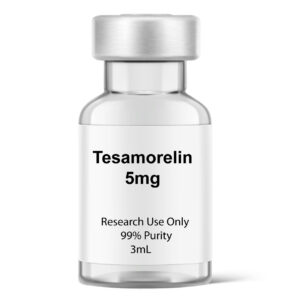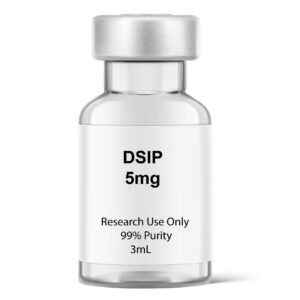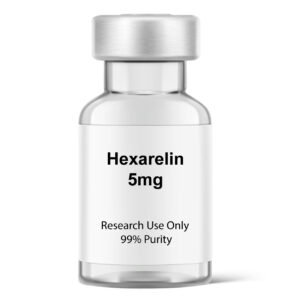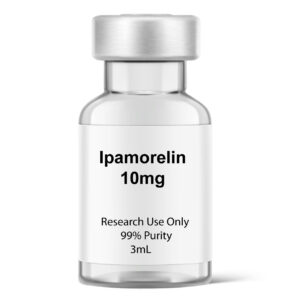Ipamorelin – For Research Use Only
Introduction to Ipamorelin
Ipamorelin is a synthetic pentapeptide belonging to the growth hormone secretagogue class, specifically designed for in vitro and laboratory research. Structurally composed of five amino acids (Aib-His-D-2-Nal-D-Phe-Lys-NH2), it functions as a selective agonist of the ghrelin/growth hormone secretagogue receptor (GHS-R). Ipamorelin is studied for its ability to promote growth hormone (GH) release in non-human models and controlled lab settings.
Research Applications
Ipamorelin is of interest to researchers investigating the endocrine pathways involved in growth hormone regulation, cell signaling, and peptide-receptor interactions. Its selective activation of GHS-R with minimal impact on other hormone levels (e.g., cortisol and prolactin) makes it a compelling candidate for studies focused on:
GH-releasing mechanisms
Endocrine signaling cascades
Appetite-regulating peptides and metabolic function
Muscle protein synthesis pathways
Tissue recovery models
All use is intended strictly for laboratory and academic research. Ipamorelin is not approved for human or veterinary use.
Mechanism of Action
In laboratory models, Ipamorelin binds to the ghrelin receptor (GHS-R), stimulating the release of growth hormone from the anterior pituitary gland. This pathway does not significantly activate other hormone-producing systems (e.g., adrenal or lactotropic), differentiating Ipamorelin from earlier GHRPs like GHRP-6.
Upon receptor binding, Ipamorelin is believed to trigger a signaling cascade involving cyclic AMP (cAMP) and protein kinase A (PKA), leading to increased GH output in appropriate research environments. This makes Ipamorelin an important tool for experiments involving:
Endocrine receptor selectivity
Peptide-receptor kinetics
GH axis modulation in vitro
Key Research Areas
When applied in controlled studies, Ipamorelin has demonstrated effects including:
Dose-dependent GH release
No significant elevation of cortisol or prolactin (in contrast with some GHRPs)
Preserved receptor selectivity, supporting targeted GH response
Anabolic signal transduction, of interest for muscle regeneration models
These effects have been noted in both cellular assays and non-human animal models.
Certificate of Analysis
| Property | Description |
| Chemical Sequence | Aib-His-D-2-Nal-D-Phe-Lys-NH2 |
| CAS | 170851-70-4 |
| Molecular Formula | C38H49N9O5 |
| Molecular Weight | 711.868 g/mol |
| CID | 20754357 |
| Appearance | White Lyophilized Powder |

